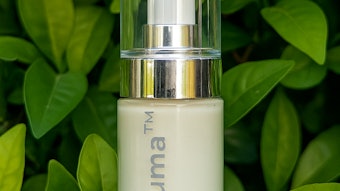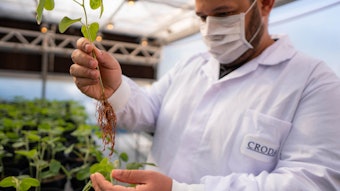Regulations, environmental responsibility, stability and other formulation issues, and cost represent the leading challenges for CPGs and their suppliers. Beginning in 2009, responding to an EU marketplace in which some traditionally fragranced products faced increased safety and environmental labeling requirements, CPL Aromas Ltd.’s R&D team began work on a technology, dubbed Ecoboost, to allow fragrances to be concentrated by 10 times more than conventional formulas while also making it easier for customers to achieve Ecolabel compliance, lower costs and improve performance across a range of personal and home care categories.
“Changes to regulations meant that for some categories it was hard to create unlabeled fragrances,” notes CPL’s global R&D director Tim Whiteley.
Stability and Performance
In the candle category, brand owners often seek cinnamon and other Christmas-related scents formulated below standard dosage so as to avoid the need for labeling. CPL’s technology allows perfumers to formulate scents to be dosed at 0.5% instead of 5%. Instead of standard cinnamon-scented materials, says Whiteley, the perfumers used alternatives with odor-boosting performance.
For high-end candle fragrances, customers often ask for fine fragrance-quality scents in a candle, requiring a dosage as high as 12–15%. That high threshold presents numerous stability issues, including bleeding, says Whiteley. However, using a technology such as Ecoboost can allow perfumers to provide the same strength and character performance of a conventional scent at a level of just 1.5%—causing all stability issues to disappear.
In experimenting with low-dose fragrances, Whiteley’s team found that discoloration issues were minimized or eliminated. In a surfactant-based product, for instance, the ratio between surfactant and fragrance was different than conventional formulations, therefore reducing the reactivity of the fragrance component. For instance, discoloration and browning of a honey fragrance in a body cream could not be prevented over time at standard dosage. CPL’s high-impact fragrance technology dramatically reduced discoloration.
Reducing or Eliminating Alcohol
A number of companies through the years have pursued alternative solvents to create label-free and alcohol-free formulations. One popular alternative has been silicone, which can accommodate fragrances at standard dosages. However, says Whiteley, silicone is expensive and possesses “a different skin feel.”
“So what is the solution?” he says. “If you push the fragrance dosage to 1%, you can use alcohol at a minute level.”
A standard EDT is 10% fragrance and 5% water; alcohol comprises the rest. Using the technology developed by the CPL team, perfumers were able to create EDTs with conventional strength by dosing the scent at 1%, decreasing the alcohol dose and boosting the water content to as high as 50%. The result, says Whiteley, are low-alcohol formulas with conventional skin feel and performance. The same technology allows formulators to provide alcohol-free formulas, for instance for baby products, offering lower strength and less fragrance without sacrificing clarity, stability, spray pattern/nebulization or skin feel.
While most customers are satisfied with minimizing alcohol content, a handful are pursuing 100% alcohol-free formulations, particularly in the Middle East where religious restrictions call for greater vigilance. “A 10% fragrance dose in an alcohol-free scent is not possible,” says Whiteley. “It won’t be clear or acceptable on skin.” Being able to concentrate a scent 10 times the conventional amount allows formulators to overcome these challenges.
Application in Household Products
In household refill products in which fragrance performance is expected once a formula has been diluted anywhere from one to 50 times, institutional-type dosages are being incorporated into consumer products. “You want to concentrate to minimize packaging,” says Whiteley, “and give fragrance power at 10 times lower [dosage.] … We’re seeing that type of product succeed on the marketplace in Europe.”
While the first purchase might be relatively expensive, refills offer cost benefits going forward, with the added environmental benefit of minimizing packaging. From a cost point of view, the margins on refills are dramatically higher than on the initial product. High performance, low-dose fragrances can help product developers hit the right cost parameters to produce those margins and ultimately create lower-cost products with the same performance as conventional offerings.
In a glass cleaner product, Whiteley explains, perfumers using the Ecoboost technology will face no impact on formulation whatsoever. All-purpose cleaners, on the other hand, often have a level of active ingredient in formulation for cleaning and stability. By creating formulas requiring 10 times lower dosage, product developers can conceivably reduce the level of active ingredients by 30% in the base formulation with no impact on performance, says Whiteley.
Fragrance Formulation and Transferability
Creating highly concentrated formulas can be achieved a number of ways. Because dilution impacts odor perception, in some cases materials may be overdosed, resulting in vastly different odors pre- and post-dilution. Sometimes, the odor of the undiluted scent will even be unpleasant, revealing its true nature only when diluted. And so, says Whiteley, perfumers working with the Ecoboost technology will focus on the character of the end dilution, not the “neat” formula. In addition, perfumers will employ unusual materials, including malodor molecules, flavor ingredients, mercaptans, etc.
Conventional fragrances typically have a solvent content of 10–15% percent or higher, notes Whiteley, but some solvents have to be category specific—for instance candle solvents differ from shampoo solvents. With a high-impact fragrance technology, formulators have greater cross-acceptability among categories. Scent formulas for candles and hair gels, for example, can be identical or nearly so.
“This is a new creative process,” says Whiteley of these high-impact fragrances. “It’s developing new fragrances for [customers] rather than giving them a modified version of something they already have.” Customers often ask if existing scents can be converted to high-impact versions, which is difficult, says Whiteley, “because you have a much different way of putting the fragrance together.”
“In many instances existing scents cannot be reverse engineered,” he continues. “The creation process is quite a bit different, not a modification of something that exists, so you start over.”
But in pursuing cost, stability, labeling and other objectives, beauty brand owners may find the inconvenience worth the development time.










